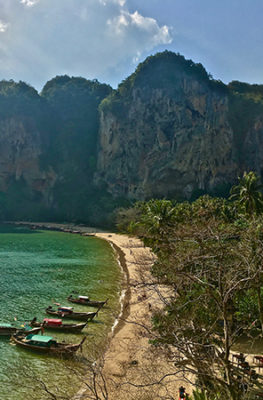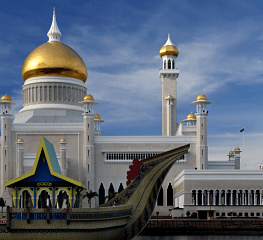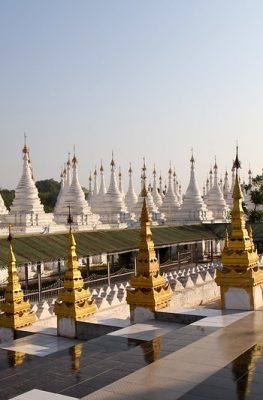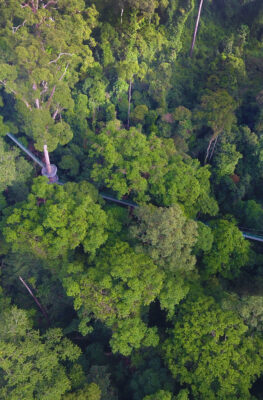Published on December 7, 2009

The diverse landscape that exists in Southeast Asia is an explorer’s paradise. Jungle treks, mountain hikes, hillside tribes, remote temples, stunning vistas, the list goes on. When CNN correspondent Anderson Cooper first left highschool, he grabbed a video camera and headed to the border of Thailand and Myanmar to find out about the area. That spirit of adventure is all that is required to make a trip to the region like no other. Here are a list of some of the better treks for you to explore.
Ratanakiri, Cambodia
Extremely remote and truly untouched (so far) by modernization, Cambodia’s northeastern frontier province of Ratanakiri is a unique place to trek. Unspoiled tropical rain forest with many tribal villages, hiking through the region is like hiking back through time.
Northern Laos
Northern Laos has the best trekking in the country where ethnic hill tribes still call the mountains of Laos home. Landing in Luang Prabang, or Luang Mantha are the perfect starting points to organize trips into the hills and spend some time with indigenous locals.
Chiang Mai, Thailand
Treks through northern Thailand can vary from a day-trek to a week (two to three nights) and can feature jungle walking, tours via elephant back and bamboo rafting. Spending a night with Lisu and Aka hilltribe villages is usually also recommended.
Gunung Mulu National Park – Borneo, Indonesia
Gunung Mulu National Park is considered to have the best trekking in the region and showcases the massive Sarawak Chamber; the world’s largest underground chamber. Mulu National Park has recently been added as a UNESCO World Heritage Site and is famous for its caves, cliffs and gorges, not to mention the unique birds, animals and plant-life that grow in the region.
Rinjani, Lombok, Indonesia
Lombok’s Mount Rinjani is an active volcano rising 3,726 m. The second highest volcano in Indonesia, Mount Rinjani’s most recent eruption was just back in May 2009. Segara Anak the volcano’s 8.5 km oval-shaped caldera is filled partially by a crater lake and is about 200m deep. Eruptions through the ‘90’s helped form a small cone, Gunung Baru rising out of the lake. The hike is a tough one (3-5 days), but the scenery is unlike any other in Southeast Asia (if not the world).
Volcano trekking, Indonesia
Some of the best trekking in Indonesia is found on the active volcano, Mount Bromo, which stands about 2000m high. Tangkuban Perahu, near Bandung, is another popular volcano for trekking on Java, while Krakatoa (yes that Krakatoa) is the crown jewel of the region.
Inle Lake, Myanmar
Inle Lake is probably the most popular area for trekking through Myanmar. Most treks leading to Palaung, Danu or Pao villages start in this area. The treks lead through pine woods and paddy fields with the added attraction of being able to stay as guests overnight in Buddhist monasteries.
Kinabalu National Park – Borneo, Malaysia
On the Malaysian part of Borneo, Kinabalu National Park is possibly the best known trekking option in Southeast Asia, in no small part due to Mount Kinabulu. The mountain is over 4,000m high but offers a surprisingly easy and accessible climb.
Gunung Jera, Kedah, Malaysia
Mount Jerai is the highest mountain in Kedah at a height of 1,217m. The mountain is essentially a massive limestone rock, protruding from the rest of surrounding geography. The height of the mountain was used by traders as a navigational point; in other words it’s really high compared to everything else.
Mt. Pulag, Philippines
Luzon’s Mount Pulag is the island’s highest peak rising 2922m and is the second-highest mountain in the Philippines. Because of it’s towering stature, Mt. Pulag is pretty much rain soaked throughout the year, with August getting the most precipitation. The interesting thing, besides the vast amount of wildlife, is the grasslands near the summit of the mountain. Like something out of Sound of Music, without those annoying Von Trapp kids, the scenery is completely unique and seems out of place with the volcanic rock and cliffs that predominate the region.
Scott Holmes is an independent filmmaker and freelance writer and blogger living in Bangkok. He is also the Marketing and Content Manager as well as Executive Editor of www.SoutheastAsia.org.






